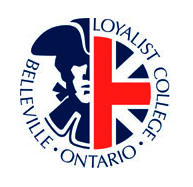Journalists put to the test: Interpersonal Closeness
BELLEVILLE – QNet News tried something different this week in the interest of social science.
In 1997, a man named Arthur Aron and several others conducted a study called The Experimental Generation of Interpersonal Closeness: A Procedure and Some Preliminary Findings. The general idea was that by having strangers sit down together and answer a set of 36 increasingly personal questions about themselves, that the experience could accelerate feelings of intimacy, attraction and love.
We wanted to put this experiment to the test, right here in the newsroom. We broke a few rules and instead of strangers, we randomly paired fellow journalists. Could this experiment strengthen relationships amongst peers, spark romance, or would it simply flop? Either way, it was worth a shot in the name of forming a more welcoming workplace.
We gave our test subjects the 36 supposed love conjuring questions, separated into three sets – each more prying than the last.
Our groups consisted of second-year Kayla Haggett and third-year Haley Rose, second-year Jake Watson and third-year Nick Ogden, as well as second-years Scott Gardner and Leah Den Hartogh.
Set One allowed our journalists to break down a few awkward barriers and get to know one another’s lighter sides, answering questions such as: Would you like to be famous, when did you last sing to yourself, and for what in your life do you feel most grateful?
Set Two, however, dug a little deeper. These questions began to scrape the surface of personal experiences and values. The atmosphere switched gears and our writers were beginning to let go – for science of course.
Over an hour into the experiment, our journalists – feeling closer than ever – moved on to Set Three. This set circled around deep rooted issues and beliefs. It forced our participants to have full trust in their partner to be accepting of the answer they would provide.
While everyone agreed that this experiment may not be enough – as it is – to make two people fall in love romantically, there was no denying the incredible impact it had on each of our participants. Each set of partners spent upwards of one or two hours exploring their best and worst sides with one another, self-reflecting in ways few often get a chance to do.
There was a period of adjustment after the interviews, where a few of our journalists found it difficult to regain their prior mindsets. Rose admitted she even feared slipping back into the world of stress and deadlines.
“The newsroom is warmer, calmer, and the people in it feel like home,” said Watson.
 Print This Post
Print This Post






